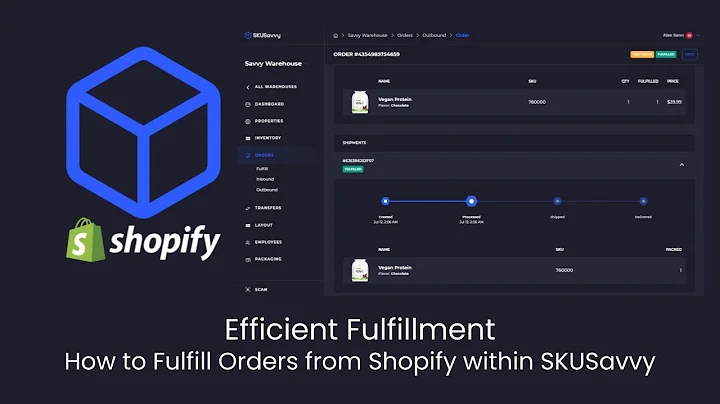Mastering Shopify SEO: Boost Your Online Store's Organic Traffic
Table of Contents
- Introduction
- Understanding the Importance of SEO in Shopify
- The Power of Optimizing Category Pages
- Why Category Pages are Critical for E-commerce Websites
- How to Optimize Category Pages for SEO
- Maximizing the Potential of Product Pages
- Factors to Consider for Product Page Optimization
- Tips for Writing Compelling Product Descriptions
- Leveraging Images and Alt Text for SEO
- Unleashing the Hidden Power of Blogs
- Why Blogs are Essential for E-commerce Websites
- Strategies for Creating High-Performing Blog Content
- Essential Shopify SEO Settings to Remember
- Title and Meta Description Optimization
- Social Sharing Image Optimization
- Integrating Google Analytics and Search Console
- Conclusion
Shopify SEO: Optimizing Your Online Store for Organic Traffic
Welcome back, uso legends! In today's video, we're diving into the world of Shopify SEO and uncovering the secrets to driving organic traffic to your online store. Building a brand new Shopify store is exciting, but without the right optimization techniques, it can be challenging to attract visitors, especially in a competitive niche. Don't worry, though! In this beginner's guide, we'll explore various strategies to optimize your website and generate consistent, free organic traffic. So, let's get started!
Understanding the Importance of SEO in Shopify
Before we delve into the nitty-gritty of Shopify SEO, it's crucial to understand the significance of search engine optimization for e-commerce websites. While building your Shopify store, you need to keep in mind that it's not just an online store; it's an e-commerce platform. This means that you must grasp the workings of SEO and how it influences website traffic for online stores. To gain a deeper understanding of this topic, let's take a step back and revisit my ecommerce breakdown videos, which provides valuable insights into how traffic flows within different sections of an e-commerce website.
The Power of Optimizing Category Pages
Category pages play a pivotal role in driving organic traffic to your Shopify store. Understanding their importance and optimizing them accordingly can significantly impact your website's performance. Most often, shoppers are not searching for a specific product but rather a particular product category. They know the type of product they want but haven't finalized their decision on the exact product yet. This is where category pages come into play, as they allow shoppers to explore the available options and make informed decisions. By focusing your SEO efforts on building well-optimized category or collection pages, you can drive significant traffic to your website. There are several essential elements to consider when optimizing category pages, including different sections, structure, images, and navigational features. Let's take inspiration from IKEA, a highly successful ecommerce store, to understand the key components of optimized category pages.
Why Category Pages are Critical for E-commerce Websites
As we analyze the top pages of IKEA's US website, we notice that the store ranks exceptionally well for competitive and high-volume keywords. However, upon closer inspection, we observe that many of these top-performing pages are not product pages but rather category or subcategory pages. This realization leads us to an important understanding: when people search for a product, they often use generic e-commerce keywords related to the product category rather than specific product names. For example, keywords like "bedroom furniture" or "men's joggers" indicate that shoppers want to browse through different options within a particular category. Consequently, your SEO strategy for your Shopify store should prioritize the creation of well-optimized category or collection pages to attract the most relevant and abundant traffic.
How to Optimize Category Pages for SEO
To optimize your category pages effectively, adopt IKEA's approach by incorporating various sections, relevant keywords, and valuable content. By providing different ways for customers to sort, filter, and explore products within a category, you enhance their browsing experience and increase the chances of conversion. Additionally, having a structure that includes headings and subheadings helps Google understand the page's content and rank it accordingly. For example, IKEA includes a substantial chunk of contextual content at the bottom of its category pages, providing additional relevance and context. To implement these optimizations on your Shopify website, let's take a look at a demo store to understand the step-by-step process.
Maximizing the Potential of Product Pages
While category pages are paramount for attracting organic traffic, it doesn't mean that we can overlook product pages. Although direct traffic to these pages may be limited, it's essential to optimize them to ensure that they contribute to your overall SEO strategy. Focusing on the basic elements of product pages is a good starting point. The title should be enticing and include relevant keywords, while the description should provide valuable information and be unique when possible. A key aspect of product optimization is the addition of high-quality images and proper alt text, which assists Google in understanding the images' content. By paying attention to these details, you can enhance the overall SEO performance of your product pages.
Unleashing the Hidden Power of Blogs
While e-commerce websites often overlook blogs, they can be a hidden superpower for attracting traffic and optimizing your Shopify store. Blogs serve as an additional stream of traffic, targeting top-of-the-funnel informational keywords related to your products. By creating high-quality blog content consistently, you provide valuable information that not only attracts visitors but also establishes your authority and expertise in your niche. Integrating links within blog posts that redirect users back to your products intelligently allows you to guide potential customers towards conversion. Don't underestimate the power of blogs in driving organic traffic to your Shopify store.
Essential Shopify SEO Settings to Remember
In addition to optimizing category pages, product pages, and blogs, there are vital settings within Shopify that often go unnoticed but significantly impact SEO performance. These settings include optimizing titles and meta descriptions for the home page, setting up social sharing images, and integrating Google Analytics and Google Search Console. By comprehensively addressing these essential Shopify SEO settings, you can ensure that your website is optimized for search engines and equipped with the tools necessary to track and measure success.
Conclusion
In this beginner's guide to Shopify SEO, we covered a range of optimization strategies to help you drive organic traffic to your online store. By focusing on optimizing category pages, maximizing the potential of product pages, leveraging the power of blogs, and addressing essential Shopify SEO settings, you can establish a strong online presence and attract valuable traffic. Remember, search engine optimization is a continuous process, requiring consistent effort and adaptation. Start implementing these strategies in your Shopify store today and watch as your organic traffic grows, propelling your e-commerce business to new heights.
Highlights:
- Understanding the significance of SEO in Shopify and its impact on website traffic for online stores.
- Optimizing category pages to attract the most relevant traffic by focusing on sections, structure, images, and navigation.
- The importance of well-optimized category pages in comparison to product pages for driving organic traffic.
- Tips for optimizing product pages, including titles, descriptions, images, and alt text.
- Harnessing the hidden power of blogs for attracting and engaging potential customers.
- Essential Shopify SEO settings, such as optimizing titles, meta descriptions, social sharing images, and integrating analytics tools.
- Continuous effort and adaptation are key to achieving long-term SEO success.
FAQ
Q: How important are category pages for e-commerce SEO?
A: Category pages play a critical role in attracting organic traffic to e-commerce websites. Most shoppers search for product categories rather than specific products, emphasizing the need for well-optimized category pages.
Q: What elements should be included in category pages?
A: Optimized category pages should include different sections, structured content, relevant keywords, navigational features, and high-quality images. Additionally, adding contextual content at the bottom of the page enhances its SEO performance.
Q: Are product pages essential for SEO in Shopify?
A: While direct traffic to product pages may be limited, optimizing them is still important in contributing to overall SEO strategy. Elements such as titles, descriptions, images, alt text, and links within blog posts can improve product page performance.
Q: How can blogs benefit e-commerce websites?
A: Blogs are a valuable tool for attracting organic traffic and establishing authority in your niche. By targeting top-of-the-funnel informational keywords and integrating links to product pages, blogs can drive potential customers towards conversion.
Q: What are some essential Shopify SEO settings to remember?
A: Ensure that titles and meta descriptions are optimized for the home page, set up social sharing images, and integrate Google Analytics and Google Search Console to properly track and measure SEO performance.
Note: This FAQ section is for demonstration purposes only and should be customized to fit the specific content of the article.






















